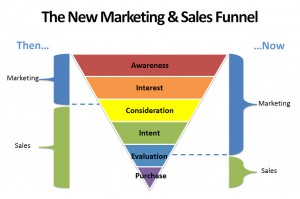Do You Have A Sales Pipeline or Pipedream?
In the complex and often unpredictable sales landscape, differentiating between a realistic sales pipeline and an elusive pipedream is essential. Understanding these contrasting concepts and mastering their nuances can enable sales professionals to maximize productivity, streamline strategies, and enhance results. This comprehensive article dissects these concepts, explain their implications, and illuminate the road toward more productive and strategic sales ventures.
Understanding the Sales Pipeline and Pipedream
The Sales Pipeline: An Operational Lifeline
The sales pipeline is a vital strategic tool, functioning as a visual snapshot of where prospects are in the sales process. It serves as the backbone of sales operations, offering a comprehensive view of pending sales and facilitating reliable revenue forecasts based on the likelihood of deal closures. A robust, well-maintained pipeline is the cornerstone of predictable and stable revenue.
The Pipedream: A Mirage in the Sales Desert
In contrast, a pipedream in sales signifies a deal that, despite its enticing allure, is unlikely to come to fruition. It often stems from overly optimistic assumptions and can lead sales professionals into the trap of investing resources into opportunities that offer little to no return. Sales leaders mistakenly share the information in their sales pipeline with their CFO, and that data is used for the senior leaders and shareholders. If your team has a pipedream and not a sales pipeline, it is just a matter of time for you to feel significant friction as we close 2023.
Delineating the Difference
The distinction between a sales pipeline and a pipedream hinge on the principles of reality and feasibility. While a sales pipeline represents tangible progress of leads through the sales cycle, a pipedream rests on fragile hope for sales prospects that may never materialize. Unfortunately, more than 50% of salespeople are not trained in selling skills. As a result, they are often overly optimistic and need help distinguishing between genuine buyer interest and put-offs.
The Impact of Supply Chain Constraints on Sales
Supply chain constraints have provoked a unique response from buyers. Anticipating shortages and delays, many have begun to over-order, hoping to ensure their required quota is met. Though born out of necessity, such practices can lead to inflated sales pipeline figures.
This inflation of sales orders can distort the perception of a company’s sales potential, creating a mirage of a booming business that, upon closer examination, is based on uncertain and potentially unfulfillable orders.
The Shift to Smaller and Less Frequent Orders
As the dust settles, a new trend is taking shape – smaller and less frequent orders are becoming the norm. Though this shift could be construed as an economic warning sign, it’s not necessarily indicative of a recession on the horizon.
Instead, this trend reflects strategic inventory management practices spearheaded by CFOs. As businesses work through excess stock, order frequency has decreased, leading many optimistic sales pipelines to morph into doubtful pipedreams.
Sales Pipelines vs. Pipedreams: Unmasking the Current Realities
The Balloon of False Hope
In the present climate of excess inventory and dampened demand, many once-promising sales pipelines are inflating into balloons of false hope. The perceived sales potential from extra orders may be merely pipedreams as demand dwindles.
The Imperative of Pipeline Auditing
Considering these revelations, the importance of auditing sales pipelines has never been more pronounced. Companies must meticulously qualify each order to discern opportunities from pipedreams and update their forecasts.
I have all my clients auditing their pipelines now, and one client discovered approximately $2 million in products they planned to ship in 2023 would not send. The impact of such a large order and profits from that order trickling to our bottom line is enormous. This team felt they had plenty of orders and an operations plan to deliver the revenue and make their sales plan promised to their investors. Luckily, we have several months to implement a revenue acquisition plan with current, inactive, and targeted new customers. The sales motions this account must accomplish now are much different than their plans just 30 days ago.
Identifying a Pipedream: The BANT Method
The BANT method – a well-regarded acronym for Budget, Authority, Need, and Timeline – is an incredibly effective qualifying strategy employed by sales professionals worldwide. It’s longevity and widespread adoption is a testament to its effectiveness, aiding sellers in evaluating the potential of prospects quickly and comprehensively. Using this method, sales representatives can efficiently gauge a prospect’s financial capacity, role within their organization, business needs, and the expected timeframe for implementation.
The BANT methodology is easy to remember but requires a nuanced understanding to apply effectively. Here’s how you can leverage each criterion:
Budget
Understanding a prospect’s budget enables sales professionals to gauge if a candidate can afford the solution. The probability of converting that lead into a sale is low if the funding is insufficient. Probing questions like “Have you allocated a budget for this purchase?” can help ascertain this.
Authority
Does the prospect hold the decision-making power? If not, sales representatives must navigate their way to the key decision-makers. Without their buy-in, the deal is unlikely to materialize. You might ask, “Who else, apart from you, will be involved in making the final decision?”
Need
The most critical component of the BANT method is identifying the need. The offered product or service must fulfill an immediate requirement or solve a problem for the prospect. Sales reps should delve into the prospect’s business pain points and demonstrate how their offering addresses those issues.
Timeline
A prospect may have the budget, authority, and need for your product. Still, if they’re not planning to implement a solution shortly, it could signify a low-priority project that gets delayed or shelved. Establishing the prospect’s expected timeline can help manage expectations and sales forecasts.
Using BANT to Spot Pipedreams
Using the BANT method, recognizing a pipedream from a viable lead is significantly easier. If a prospect cannot satisfactorily respond to the BANT questions, the chances are that the information is a pipedream. The candidate might have expressed interest, but the lead will likely prove fruitless without the budget, decision-making authority, a clear need, or a feasible timeline. Redirecting resources away from these unlikely prospects to more viable leads can optimize productivity and increase sales.
The Bigger Picture: BANT and Sales Strategy
Understanding the implications of the BANT method is critical. It’s not just about distinguishing a promising lead from a pipedream; it’s about formulating effective sales strategies. By focusing on tips that meet the BANT criteria, sales representatives can concentrate their efforts on the most lucrative prospects, leading to improved conversion rates and increased sales..
Remember, the BANT method is about more than disqualifying leads hastily. It’s a strategic tool to understand where a prospect is in their buying journey and how your offering aligns with their needs. It facilitates a deeper understanding of your prospects, leading to more meaningful conversations, better customer relationships, and improved sales outcomes.
Conclusion
In the challenging sales arena, distinguishing between a healthy sales pipeline and an elusive pipedream is crucial. This discernment enables sales professionals to identify and qualify viable opportunities and avoid the pitfalls of unfruitful pursuits. Implementing systematic pipeline audits using the BANT method can ensure sales efforts are well-targeted and effective, steering your sales team clear from pipedreams and toward the promise of tangible, achievable sales.
Do you have a sales pipeline or a sales pipedream?
Do your salespeople understand the difference between buying signals and put-offs?
Do your sales leaders understand how to coach salespeople and help them move sales through their pipeline?
We suggest every sales team conduct a pipeline audit immediately. In this uncertain and volatile economic time, sales teams must know the sales they can count on in their pipelines and the new sales they will need by year-end to achieve the goal. We must avoid discovering mis November; we have a pipedream and not a pipeline. Teams must adapt now. Adapting often includes sales training in skills like discovery, qualifying opportunities and handling objections.
Let’s schedule a call if you would value help to audit your sales pipeline or to improve your sales teams’ effectiveness.
If you just discovered a shortfall in your sales plan and need to adjust your plan, we can help.






